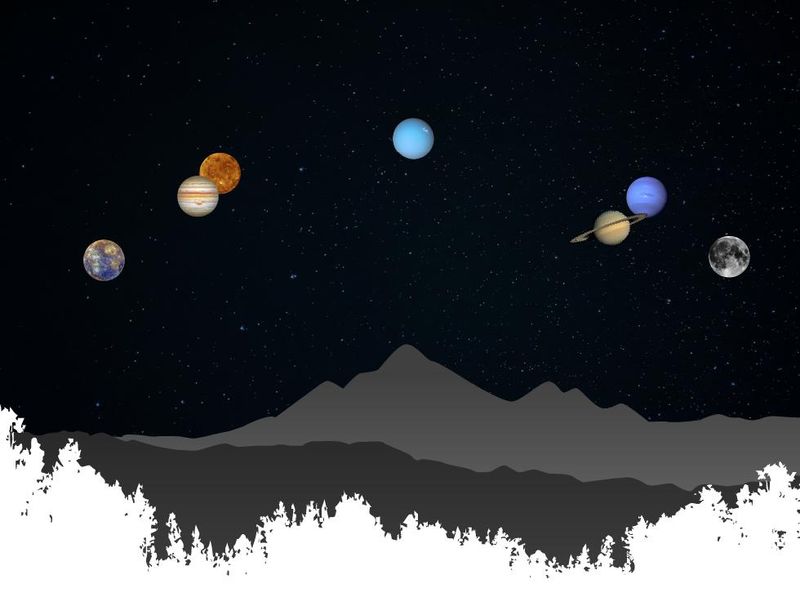
The final 'planet parade' of the year will feature six planets aligning in the pre-dawn sky on Sunday, August 10.
A planetary alignment, casually called a 'planet parade,' occurs when several planets gather closely on one side of the sun at the same time.
Mercury, Venus, Jupiter and Saturn will be bright enough to be seen without a telescope in the hour before sunrise, but stargazers will need a telescope or binoculars to see Uranus and Neptune.
Find out more about viewing the event, and the science behind planetary alignments:
Alongside the planets will be a nearly-full 'sturgeon moon' that will reach peak illumination on August 9. The planet parade will also be followed by the Perseid meteor shower, which will peak on the evenings of August 12 and 13.
Where to look for the planetary alignment
The planets will be visible on the eastern horizon, and Mercury will rise shortly before sunrise near the Cancer constellation, so it's best to start looking about an hour before the sun comes up.
Jupiter and Venus will be a bit higher to the right of Mercury and will be right next to each other. They form their closest approach of the year, known as a conjunction, on August 12.
Uranus will be the highest in the sky to the right of Mercury, Jupiter and Venus, but is best viewed with binoculars or a telescope. Then Neptune and Saturn will be a bit below and to the right of Uranus. They might be more difficult to see due to the brightness of the full moon.
How does the alignment happen?
The planets orbit the sun continuously in the solar system, so at times, they slowly catch up to one another. Because they travel along the same path, or ecliptic, as they pass Earth, it appears they are aligned, according to NASA. The alignment formation, however, will be short-lived because each planet moves at different speeds.
When will the next planetary alignment occur?
According to Starwalk, the next alignment will occur on February 28, 2026 when Mercury, Venus, Neptune, Saturn, Uranus and Jupiter align in the sky.
This article originally appeared on USA TODAY: The final planet parade of 2025 starts this weekend: Here's how you can view it
Reporting by Carlie Procell and Janet Loehrke, USA TODAY / USA TODAY
USA TODAY Network via Reuters Connect

 USA TODAY National
USA TODAY National
 KRWG Public Media
KRWG Public Media America News
America News CBS News World
CBS News World New York Post
New York Post The Spokesman-Review
The Spokesman-Review KY3
KY3 NBC Bay Area Dixon News
NBC Bay Area Dixon News OK Magazine
OK Magazine Associated Press US News
Associated Press US News The List
The List